In this Sunglasses Value art lesson, Middle School students will show off their gradient scale skills in this art project that is too cool for school.

Grades
7th, 8th Grades – the examples in this post were created by a 7th grade class.
Objective
In this Sunglasses Value Art Lesson, students will create a self portrait demonstrating their understanding of value and form using a grid technique.
Time
4 60 min lessons
Materials
- Pencils
- White copy paper
- 2’x5” cut from 9×12 Watercolor paper – Canson (100510941) XL Series Watercolor Pad, 9″ x 12″, Fold-Over Cover, 30 Sheets
- Crayola 24ct Watercolor Colored Pencils
- “Values shading” worksheet (see below)
- “Grid art practice” worksheet (see below)
- Black Construction Paper – SunWorks Heavyweight Construction Paper, 9 x 12 Inches, Black, 100 Sheets
- Dollar Store sunglasses
Inspiration/Artist
I was inspired for this lesson from this idea: Click Here
Instruction with Questions
Pre-Art
Before the students begin this unit, take a photo of each of student wearing a pair of sunglasses. I recommend that they do not show their teeth in their photo. Middle school students gladly accept haha. They easily give me their cool, “I’m wearing sunglasses suave pose.” Of course, some of them need a mirror, and several moments to try out the various shades. Insert eye roll emoji. 😊 While in New York recently, my friend’s daughter put on every pair of sunglasses on me that we had from our group.
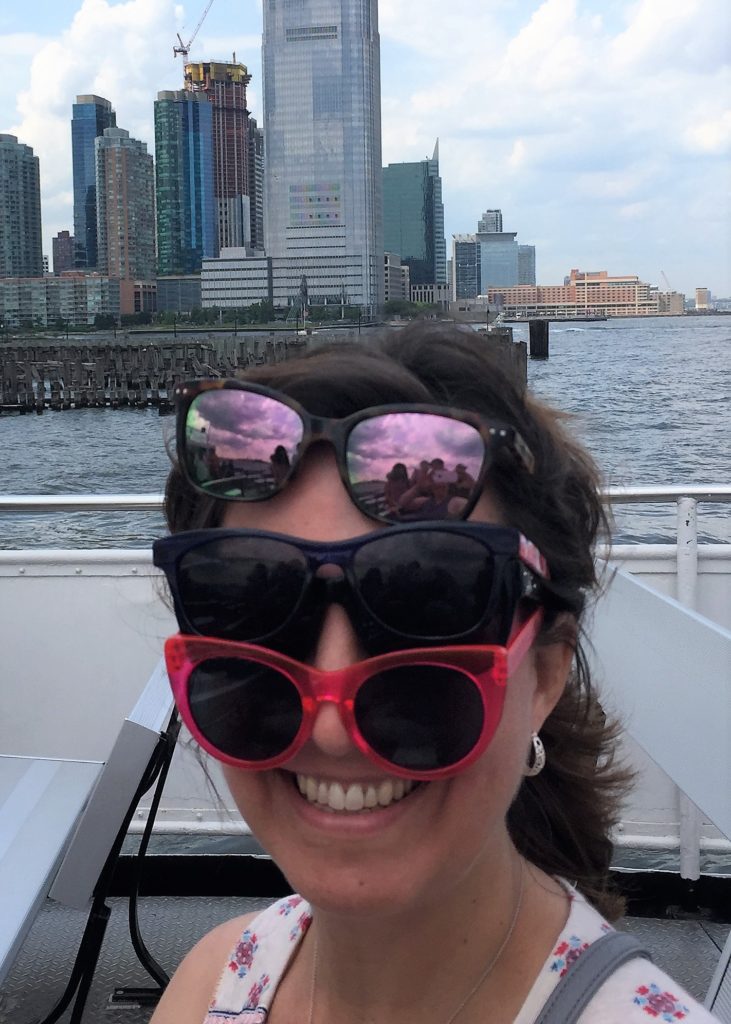
This is not a good choice for this project. But if you do it in front of your students you will be considered cool and nerdy. Win!
Day 1
Students watch videos regarding value and form, and various artists who created self-portraits.
Artists and their Self Portraits: Click Here
The Elements of Art – Value: Click Here
Elements of Art: Value – KQED Arts: Click Here
Elements of Art: Value – KQED Arts: Click Here
Discuss:
- Identify the darkest parts of an image and the lightest parts.
- How do black and white create depth in an image?
- How does grey play a role?
Students complete a “values shading” worksheet to practice a gradient scale.
For the Values Worksheet – Click Here
Students review proportions and placement of facial features. This is just a review. If you have not taught proportion for self-portraits, you may want to spend slightly more time on this part. Cue shock and panic from students. Or any human who does not go to art school. Since I am not teaching in an art specific school, and this is their first experience of grid drawing and or drawing a self-portrait, I of course let them squirm for many minutes. Bwahahaha.
Create a Face – Click Here
As you show them the image, I recommend having them actually touch their face and discover the proportions.

Day 2
Google something like, “portraits drawn shaded” and have a class discussion about what makes the image work. I have them point out the darkest darks and the lightest lights. Most of them will want to stay in a safe grey zone and this will not be dramatic enough to make the image “pop.” I tell them we are going to practice making art using a grid. Artists use grids to make a copy of an image either much smaller or much larger than the original. I have them brainstorm how this works. It’s all about proportion.
The grid practice I give them is very elementary. I do not teach in an art school specifically so for some of my students this may be their first experience. I am training their brains to find the shadows in their own image as they copy it with pencil shading for later. It is amazing how hard it is for some of their brains to count squares and copy the shapes in those squares. What I mean is…many of them will choose what is easy. I had several 7th graders in my art room recently, finishing up a project. They said, “Mrs. Newton, we love art, but it sure is hard!” Win!! I am challenging them to grow!
Teens love pizza so this is perfect.

For the Grid Worksheet – Click Here
Day 3
Students use a classroom window to trace the outline of their head. The focus of this project is not to make a drawn self-portrait from scratch. The focus is on the value and form shading. Students focus on creating shadows and light using a pencil and eraser only. Because I have almost no budget, I do not have fancy types of pencils for shading. Your basic #2 will be perfect for this first experience.
Here are the steps for this project.
#1
I give them a piece of plain grid paper. I like to give them a 1” grid. The one I use is difficult to scan and share because it is so faint. You can purchase pre-made grid paper for a little over $5 on Amazon – Click Here or you can make your own. I use a pencil and then practice with our school copy machine. Here is another one for your use. Click Here

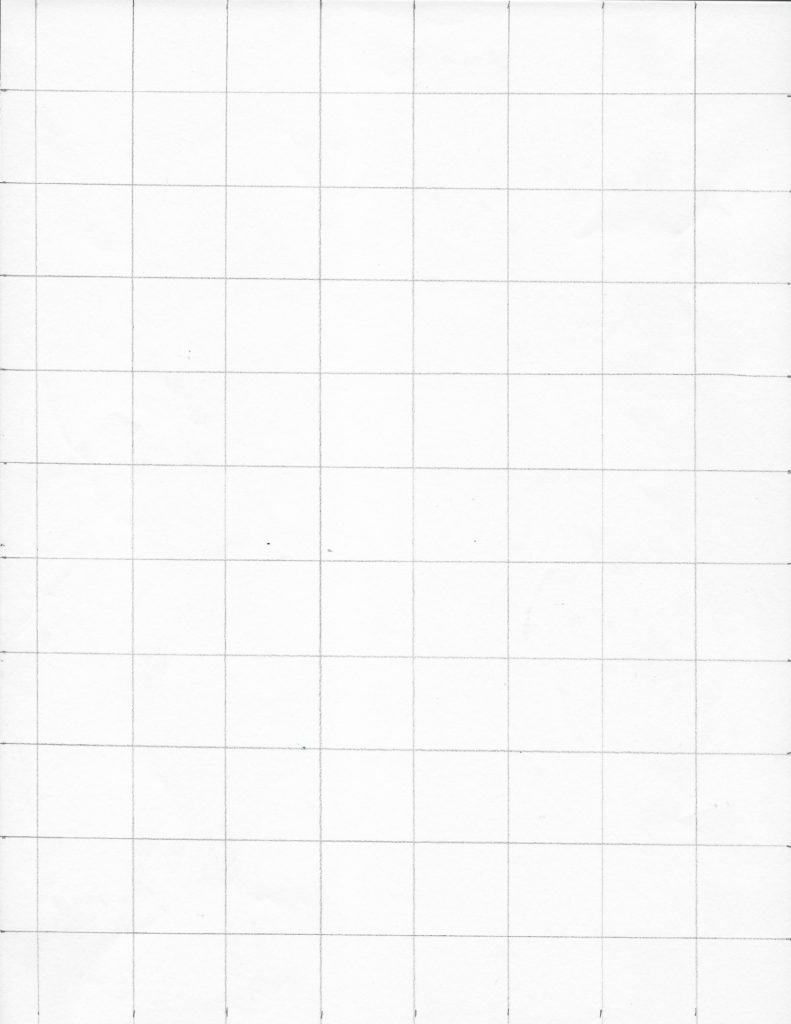
#2
Separately, I print out a black and white photo of each child wearing their sunglasses. The photograph is for reference. The drawn on faintly grid is where they will draw themselves.
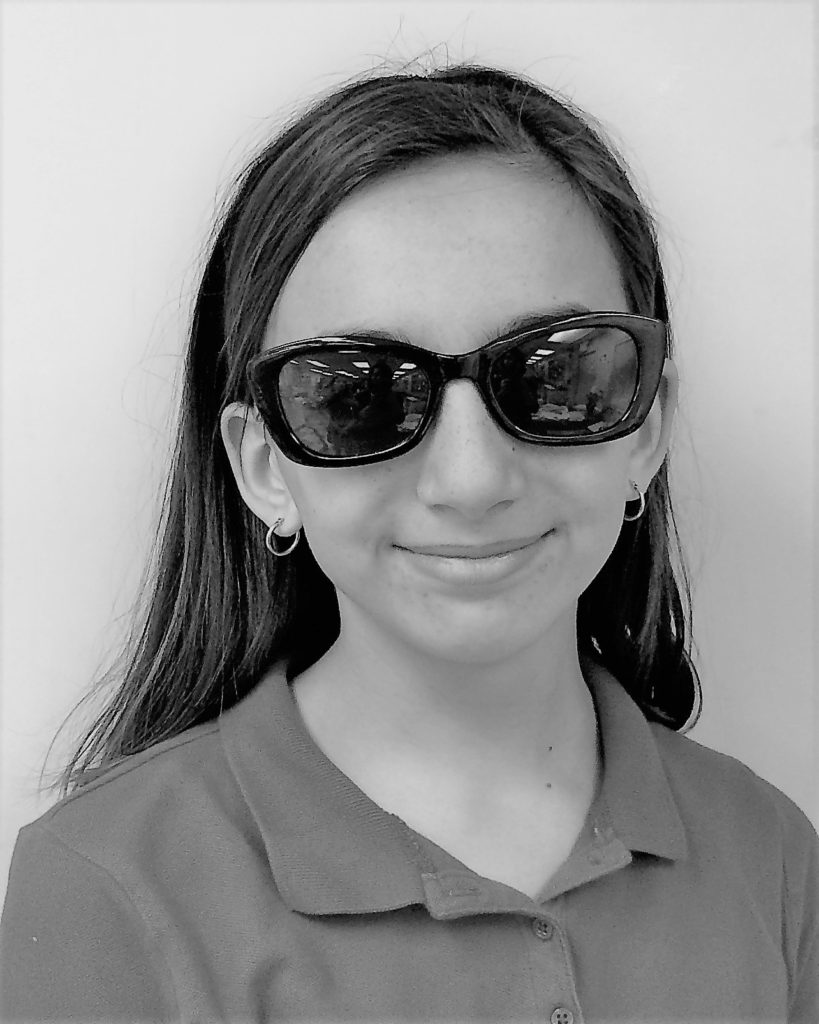
#3
I put the necessary amount of printed grid paper into the copy machine and print this photo image right on top. Now they have a grid paper empty. And a grid paper with their face imposed.
If time will allow, give them a practice blank grid paper. I tell them they are going to use the grid to copy their face from the photo. Just look at it and draw what you see. They mostly become paralyzed. I allow them to do this for several minutes. The struggle is REAL!
I finally let them off the hook and show them how to trace the main lines of their features using the classroom windows. ONE piece of tape to hang the photo. ONE piece of tape to hang the grid paper on top. You cannot believe how many pieces of tape they will use if these directions are not used. 🙂 I ask them to tell me back the directions. I simply cannot get over how there will always be one kid that massively tries to tape their papers to the window. This ends up being kind of funny, but also an issue, because you ultimately have to remove all of the tape and well, it will tear the paper.

#4
I tell them, we are not copying every strand of hair. Just lightly finding the shape of their face and shape of their eyes. I ask them to raise their hand if they have a triangle or circle for a nose. They look at me blankly. I show them that we just want to find the edges of the nostrils and where their nose meets at the bridge near their eyes. The rest will just be shadows. The grid is important in this respect because they can reference how large, and where, those shadows belong.
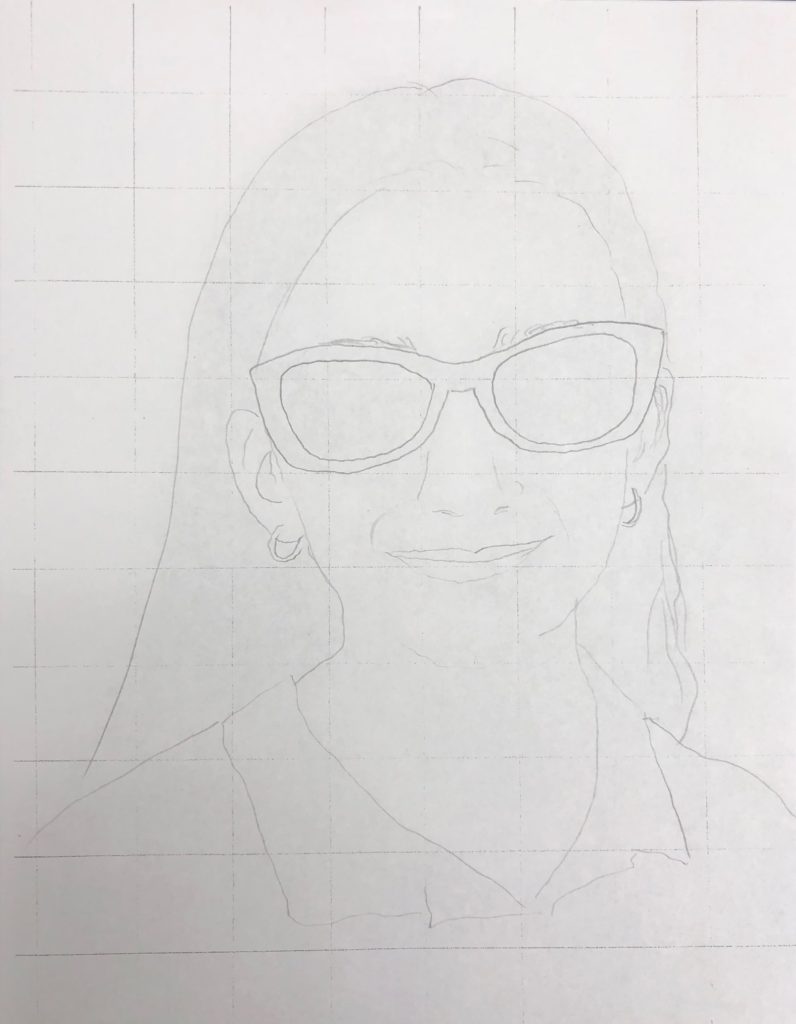
#5
While students work on their shading practice, small groups of students will be pulled aside to learn about what will go inside the lens.
The task is to consider a favorite place they like to go or wish to go on vacation, and create that scene on watercolor paper with watercolor pencils. This will be the reflection in their sunglasses. A nice beach scene, the mountains, a basketball court usually shows up on some child’s paper. Students will use watercolor pencils and water for this part. Many of them had never used watercolor pencil, so they may need some time to practice and experience this new medium.
I have them practice on scrap watercolor paper first. They need to understand that after they draw their image, they will apply water to blend the color. If they add too much water or try to draw too much over their wet surface, they will get a big ol’ hole on their paper. When they are ready, I give them a 2″x5” watercolor paper and they create their scene. This process usually only takes the average child 10-15 minutes to complete. The area is not very large and there is not much detail in general. Here is the paper with simple watercolor pencil.
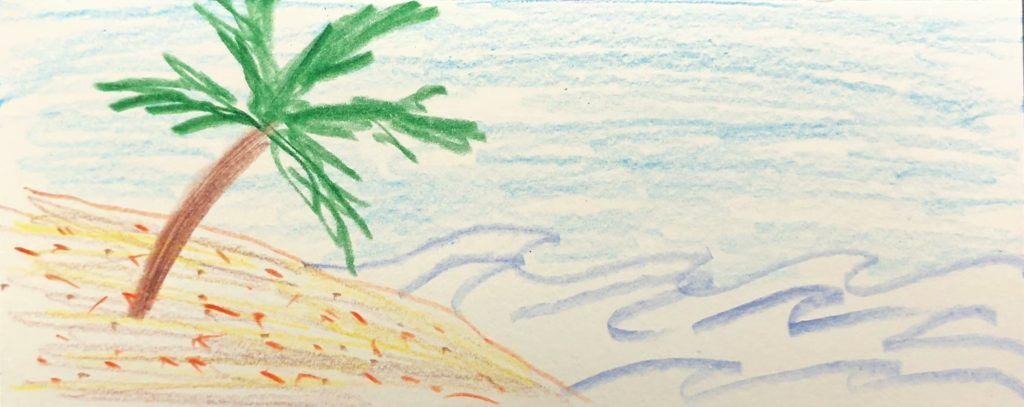
And here it is with watercolor added. I make sure to remind the students not to spread the paintbrush over the entire area all at once. Just to “Paint with water” on one color area at a time. This will keep colors from bleeding into one another.
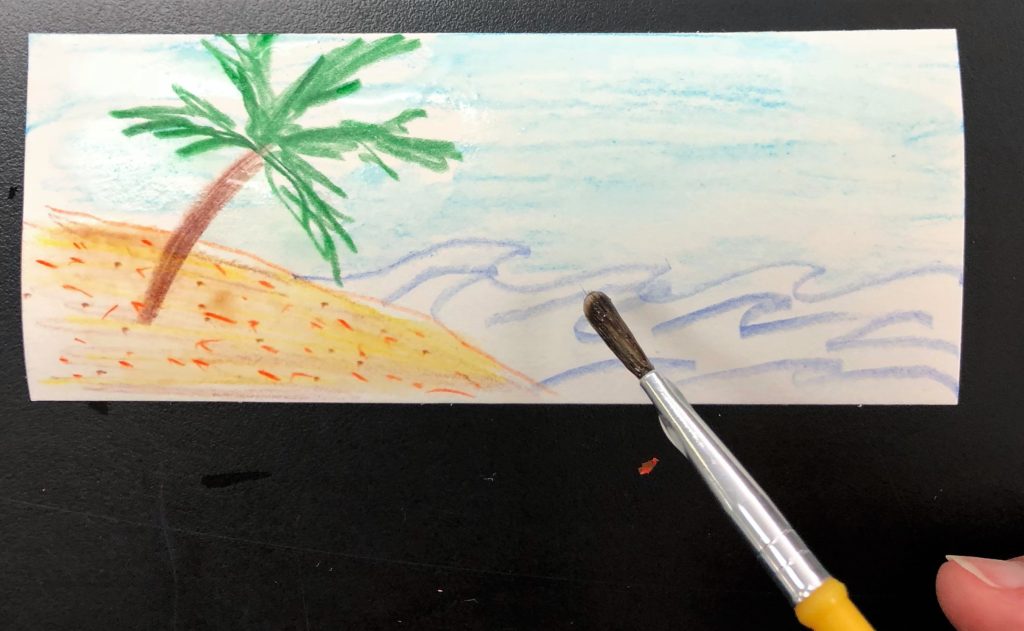
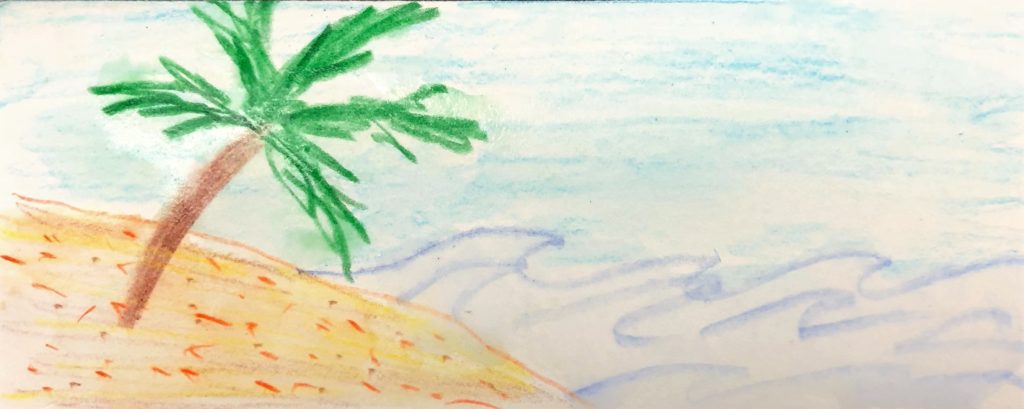
Day 4
Cut out sun-glass lenses from drawn artwork. Not the whole sun-glass frame…just the lenses. (I usually do the cutting of the lens…not the students)
Students add final touches to their drawing and tape their “scene” behind cut out eyeglasses. P.S. Pretend please that this is drawn artwork. I folded the paper so you could see the vacation image taped to the back.
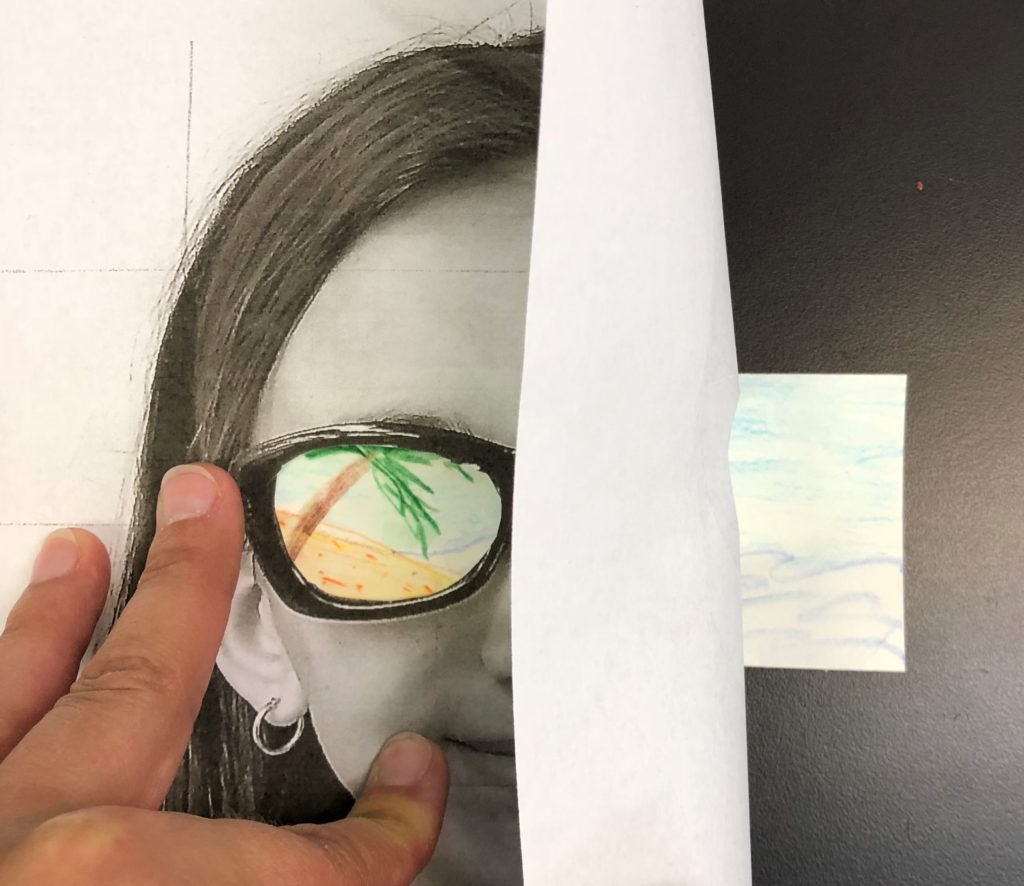
Finished artwork is glued to a black piece of construction paper. Check out these examples of value and form.
Check out these finished Sunglasses Value Art Lesson pieces!

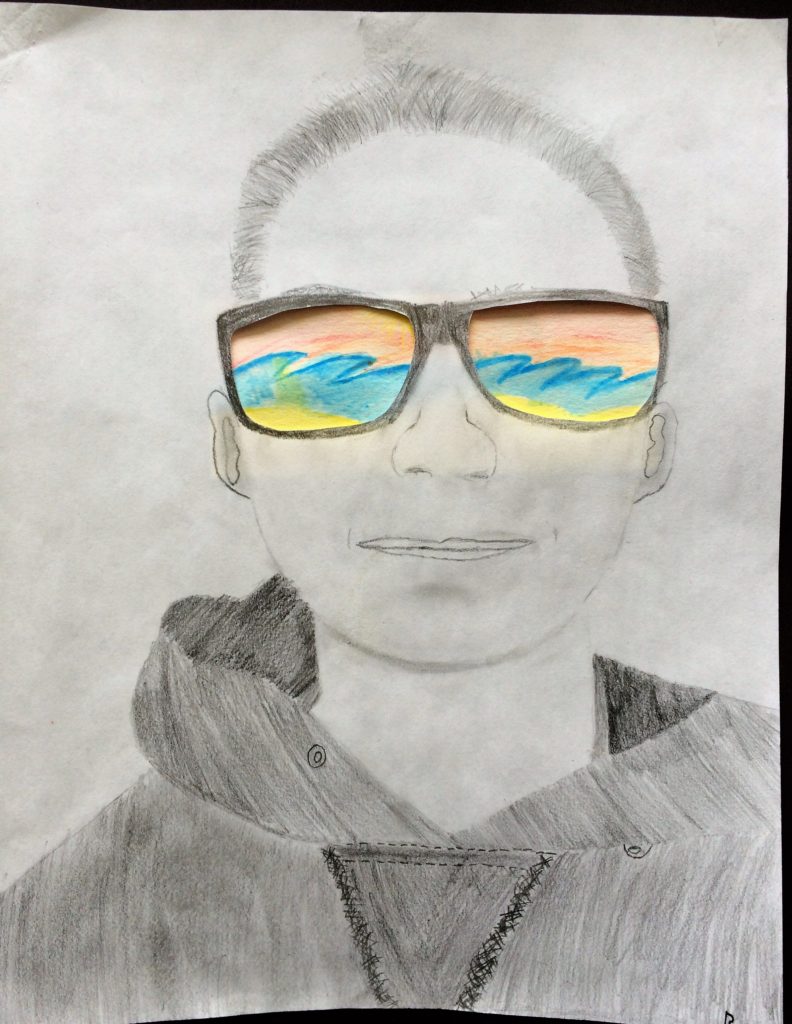
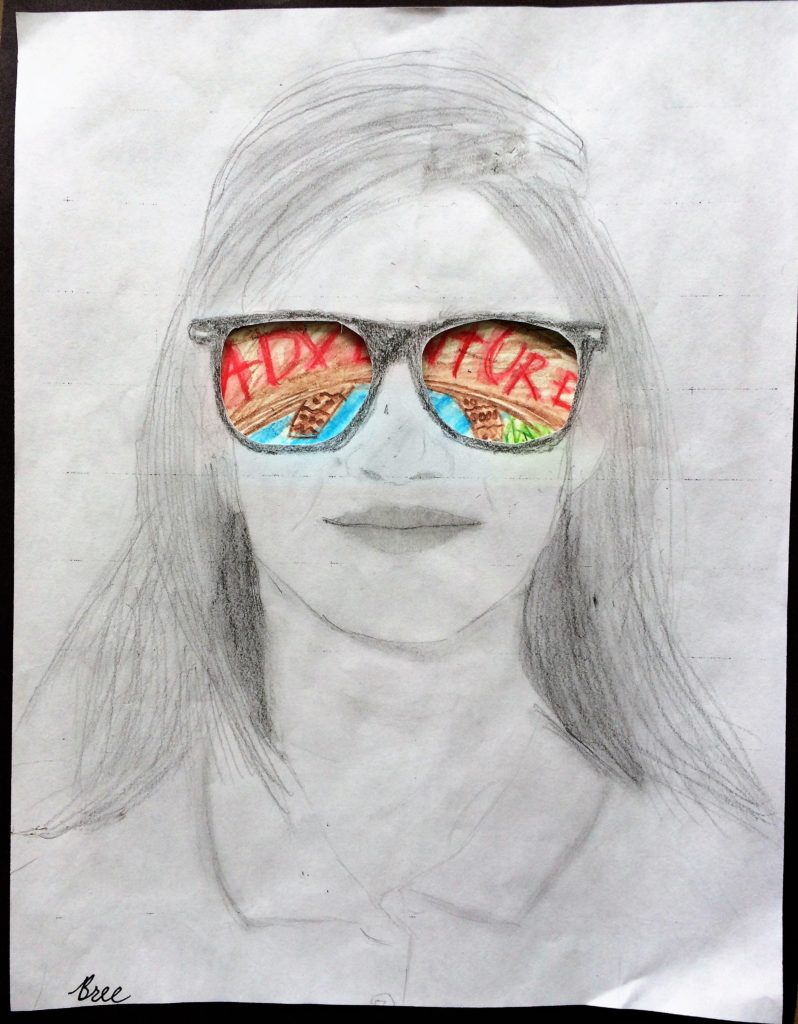


Leave a Reply